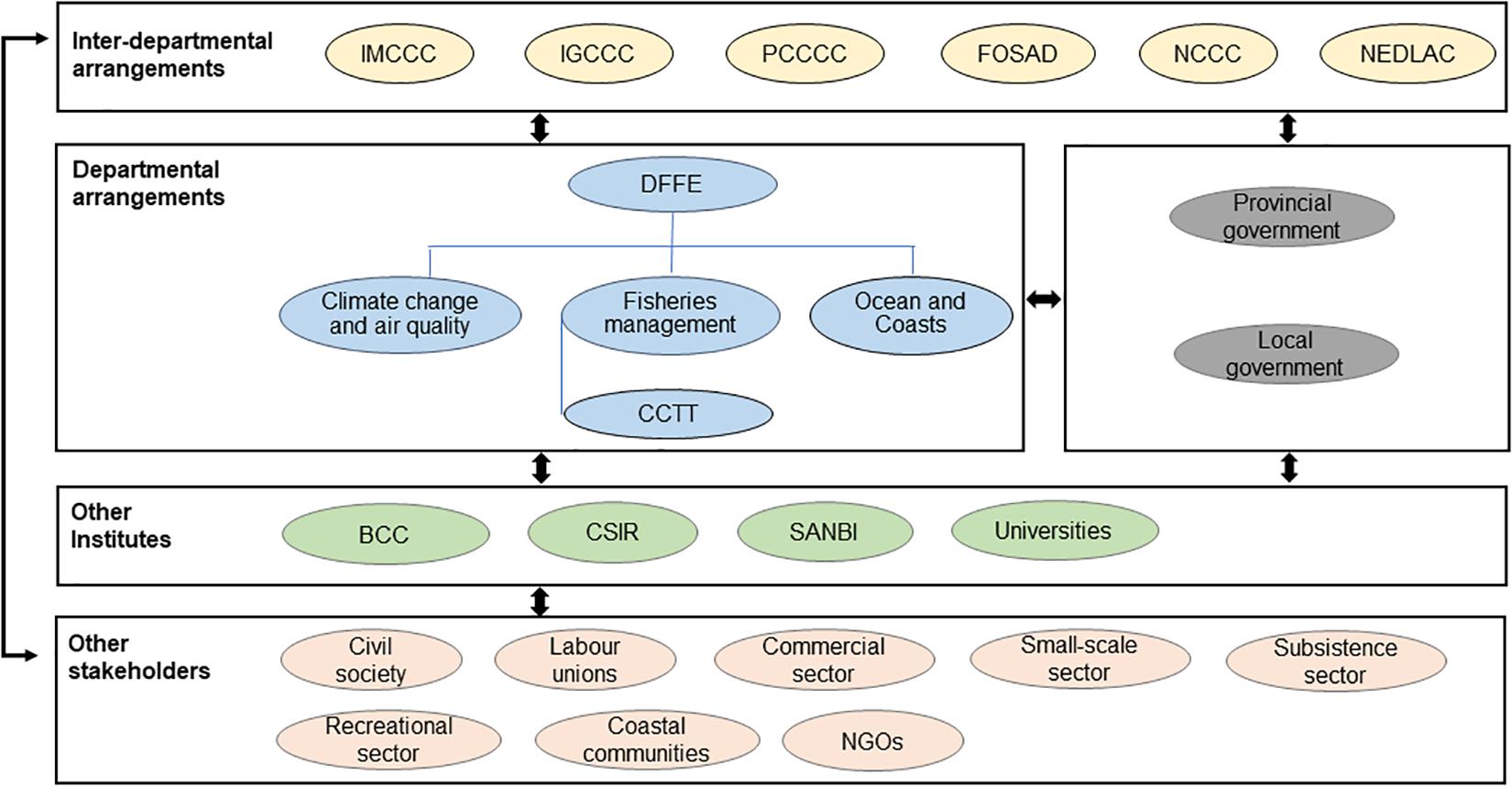Structural adjustment is not a choice anymore in South Africa but a necessity business chamber Structural adjustment is not a choice anymore in South Africa but a necessity business chamber. 197 conditional in that governments receiving debt relief were obliged to adjust their economic policy.

Frontiers Assessing South Africa S Potential To Address Climate Change Impacts And Adaptation In The Fisheries Sector Marine Science
This study inter alia established that the implementation ofIMF WB structural adjustment programmes in the SADC region has precipitated a plethora of insurmountable socio-economic problems for the citizenry of both Zimbabwe and Zambia.
. This perception is driven by the experience of the structural-adjustment programmes that the international financial institutions IFIs insisted on in the 1980s and 1990s. IMPACTS OF STRACTURAL ADJUSTMENT PROGRAMS ON LABOUR MIGRATION IN SOUTHERN AFRICA BY TINOVIMBA SEDA Labour migration goes way before the colonial period and even colonialism did not stop this trend and this saw most colonial powers using this to gain more labour for their farm mines and industrial work force. The essence of these programmes is the reductionremoval of direct state intervention in the productive and distributive sectors ofthe economy and the restriction of the States role to the.
Oil prices were high after the oil shocks of 1973 and 1979 and oil-exporting countries deposited substantial revenues in western private banks. The story begins in the 1970s. In Sub-Saharan Africa the structural-adjustment programs are partially responsible for a significant reduction of taxes on farmers an estimated average increase in RRAs of approximately 20 points according to Swinnen et al 2011.
Structural Adjustment Programs SAPs devised and operated by officials at the International Monetary Fund IMF and the World Bank in cooperation with members of the African Ministries of Finance and Planning began in Ghana in 1983 and today are in place in one form or another in virtually every African. Structural adjustment programs SAPs consist of loans structural adjustment loans. Download and Read Online Ebook PDF Epub Mobi For Free.
Structural Adjustment Programmes in Southern Africa. Their purpose is to adjust the countrys economic structure improve international competitiveness and restore its balance of payments. Tion of the adjustment programs has been achieved in the countries concerned.
The past two decades of World Bank and IMF structural adjustment in Africa have led to greater social and economic deprivation and an increased dependence of African countries on external loans. As structural adjustment programs influence the extent to which countries open up their borders to trade a comparative analysis of the applications of these adjustment programs in Southern Africa reveals the enormous potential for increased trade among countries of SADC. Although South Africa has not implemented a formal donor initiated structural adjustment pro-gram the report presents and discusses a range of economic policy reforms that have been implemented by the pre-Mandela government in recent years.
The IMF and World Bank. Throughout the 1980s and 1990s the US. National Monetary Fund and Western dono rs developed and advocated Structural Adjustment Programmes SAPs which em phasised macroeconomic stabilisation pri- vatisation and.
Implementation of structural adjustment programs SAPs within developing nations located in South America Africa and Asia. In general adjustment meant liberalising and privatising although SAPs were wider in scope in that their developmental aims were. This leads to a policy of exports at all costs because exports are the only way for developing countries to obtain such currencies.
Currently some thirty Sub-SaharanMrican countries are implementing structural adjustment programmes. Form of Structural Adjustment Programs. SALs provided by the International Monetary Fund IMF and the World Bank WB to countries that experience economic crises.
To assist African development Structural Adjustment Programmes SAPs provided conditional lending Thomson 2010. These programs sponsored by the two Bretton Woods institutions the International Monetary Fund IMF and the World Bank emphasized austerity and were created to stimulate economic growth with the purpose of. Virtually all developing countriesparticularly in Latin America and Africa and increasingly in the transition countries of east and central Europehave implemented or are in the process.
Expand their activities less rapidly even in traditional public sector areas except where they serve. It required African governments to adopt reforms to. The Implementation of Structural Adjustment Programmes SAPs are built on the fundamental condition that debtor countries have to repay their debt in hard currency.
Sustainable development in Africa. Has been a principal force in imposing Structural Adjustment Programs SAPs on most countries of the South. Furthermore the research has revealed that IMF WB influenced structural adjustment.
Vivid descriptions of the agricultural sector and the recon-. The failure of structural adjustment has been so dramatic that some critics of the World Bank and IMF argue that the policies imposed on African countries were never. According to the Association of Public Employees PSA members of senior management SMS will receive a non.
The salary increase was approved by senior government officials Senior government officials in Johannesburg will receive a salary increase of Rs 1695 to just over Rs 1800 as well as 15 of the adjustment returned in April last year. In the l980s the World Bank introduced Structural Adjustment Programs SAPs aimed at longer term restructuring of African economies along parallel lines.

Excess Mortality Associated With Mental Illness In People Living With Hiv In Cape Town South Africa A Cohort Study Using Linked Electronic Health Records The Lancet Global Health

Why South Africa Shouldn T Turn To The Imf For Help

Implications Of Structural Adjustment For Household Food Security In Africa

Hiv Self Testing Among Young Women In Rural South Africa A Randomized Controlled Trial Comparing Clinic Based Hiv Testing To The Choice Of Either Clinic Testing Or Hiv Self Testing With Secondary Distribution To Peers
0 comments
Post a Comment